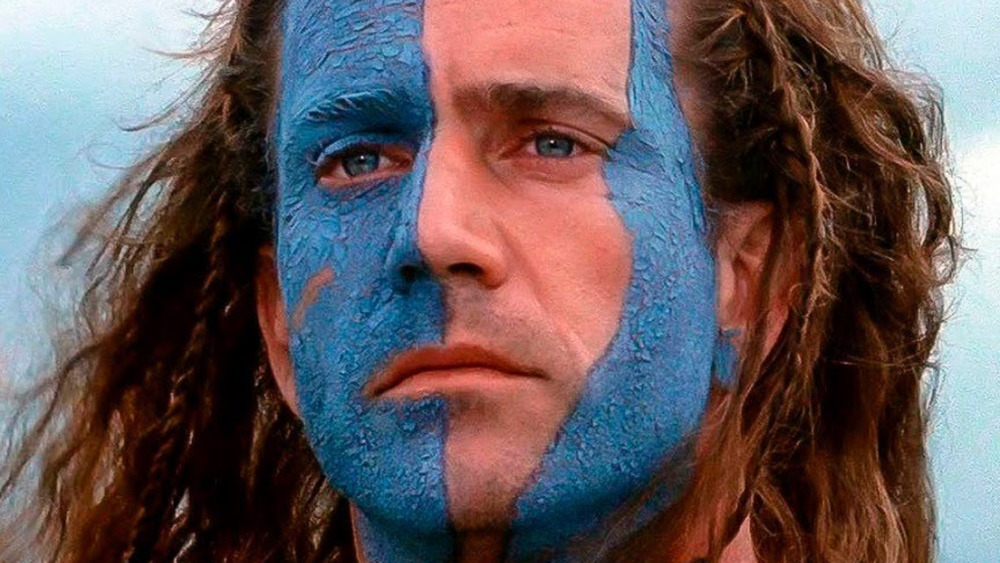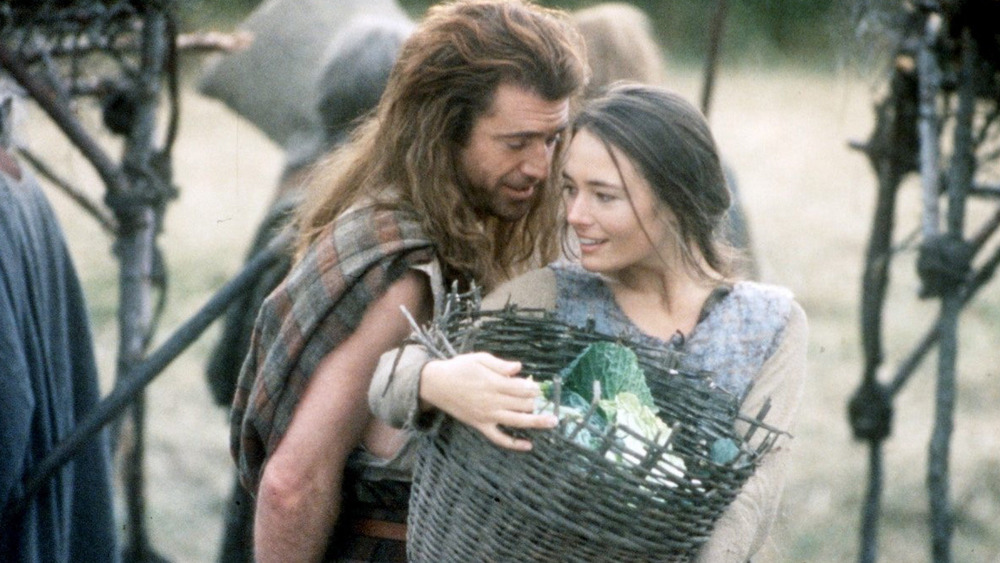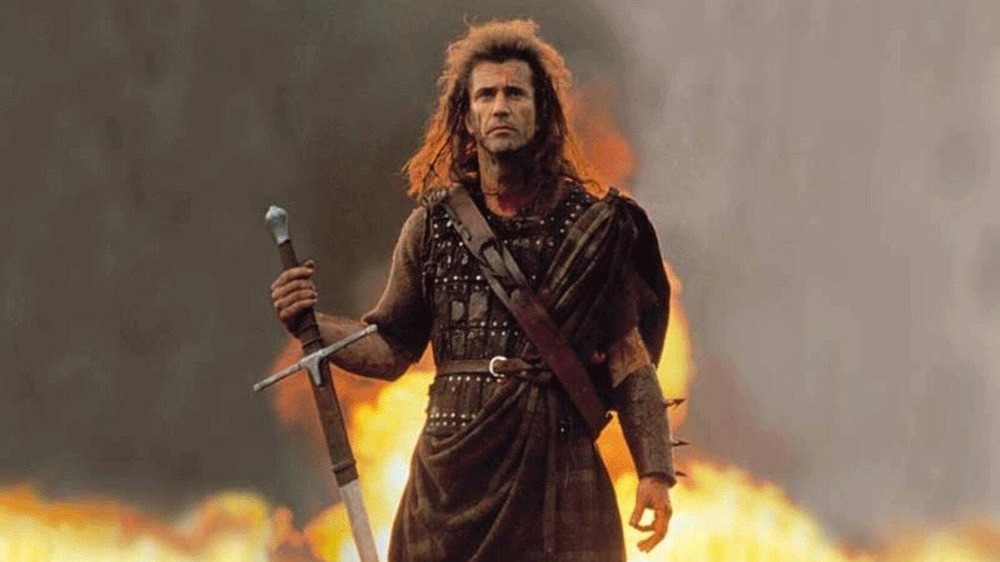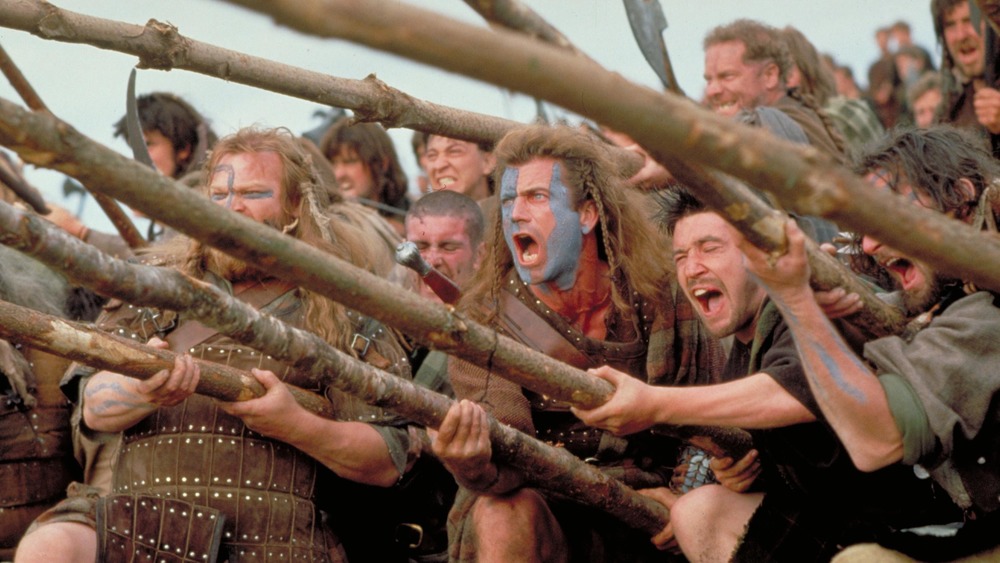Is Braveheart Based On A True Story?
In 1995, the historical drama Braveheart, directed by and starring Mel Gibson, dominated the Academy Awards. Winning Best Picture, Best Director, and three other awards, the film was lauded for its intense battles of epic proportions and the heroic journey of its protagonist, William Wallace. Set in Scotland in the late 13th century, Braveheart depicts Wallace leading the First War of Scottish Independence against England's King Edward I. He starts a rebellion the spreads across the Scottish clans, who rally together to fight off the invasion of their lands. As his legend grows, Wallace fights with all he has to save his home, sacrificing his life to the cause.
Braveheart also stars Patrick McGoohan as King Edward I, also known as Longshanks; Brian Cox as Wallace's uncle Argyle; Angus Macfadyen as Robert the Bruce; and Sophie Marceau as Princess Isabelle. While the movie definitely delivers an emotional storyline and bloody war — with an R-rating and a three-hour runtime — the inescapable question on most viewers' minds when they watch Braveheart is whether it's based on a true story. Well, as it turns out, that answer is a little complicated.
Braveheart is loosely based on the real William Wallace of Scotland
The main subject of Braveheart is widely accepted by historians as having existed and been a major part of the Battle of Stirling Bridge, but William Wallace's story has grown to legendary proportions in Scottish history. There are a few aspects of his history that people are widely agreed upon, and Braveheart tends to ignore them. For example, the film depicts Wallace as a farmer and highlander, when in reality, he was actually a member of the gentry — an upstanding social class just below the nobility. Also, the rebellion of the Scots started a year after England invaded, unlike in the film, in which the Scottish people have been under English rule for a long while.
Caroline White of the U.K. publication The Times named Braveheart the second most historically inaccurate film of all time. She specifically mentioned the film's use of kilts, an item of clothing that wasn't brought around until the 16th century, about 300 years after the events of Braveheart.
The film also features a romance between Wallace and Princess Isabelle. In reality, Isabelle would've been a child at the time of Wallace's rebellion, not a grown woman having an affair with the man leading a rebellion against her father-in-law. Additionally, Braveheart incorporates the practice of Prima Noctis, a concept rumored to have existed but believed to be a myth by historians (via Vox).
What really led to Wallace's death
One of the biggest differences between fact and fiction is what led to Wallace's death. While Braveheart shows Wallace being captured and handed over to the English at the height of the Scottish revolt, the real Wallace's ending wasn't as heroic. After the Battle of Falkirk in 1298, a tragic defeat that resulted in the deaths of thousands of Scots, Wallace's military reputation was ruined. Afterwards, Wallace took a step back from his position of power, and little is known of what he did for the next seven years (via Encyclopaedia Britannica).
In 1305, a Scottish spy working for the English captured Wallace and brought him to London. At Westminster Hall, he was tried and convicted of treason. According to History Today, Wallace was unable to argue "in his own defense, although he managed to cry that he was no traitor, since he had never sworn loyalty to the king who had judged and condemned him." His protests went unanswered, and he was lead to his execution.
After Wallace was beheaded, his head was placed on London Bridge for all to see as a warning for other rebels, while other parts of Wallace's body were scattered and displayed throughout the kingdom.
What Braveheart gets right
Although Braveheart clearly took creative liberties to make the story more exciting, the spirit of the fight for Scottish independence is clear. Wallace continues to be a heroic figure for Scotland, and Braveheart brought a lot of well-deserved attention to a lesser-known part of history. Along with that, there are a few aspects of the film that it manages to get correct.
Firstly, English did invade and occupy Scotland during Edward I's reign, with the Scots launching a rebellion shortly after the arrival of the English. The main battle led by Wallace in the film, the Battle of Stirling Bridge, did happen, and it was just as triumphant. The Scots trapped the English soldiers on a small bridge they didn't know how to maneuver, allowing the Scottish rebels to pick them off as they crossed. According to War History Online, Wallace was then named one of two Guardians of the Kingdom of Scotland, alongside Andrew Moray. Of course, Moray isn't in the film, and neither is the bridge.
As for Wallace and Princess Isabelle, they never interacted in reality, but Braveheart does capture the princess' strong, rebellious nature. While an affair with Wallace never existed, Isabelle did have an extramarital relationship with an English baron named Roger Mortimer, who helped her depose King Edward II and place her son, Edward III, on the throne (via History Extra). In Braveheart, she threatens to do this with her and Wallace's child.



